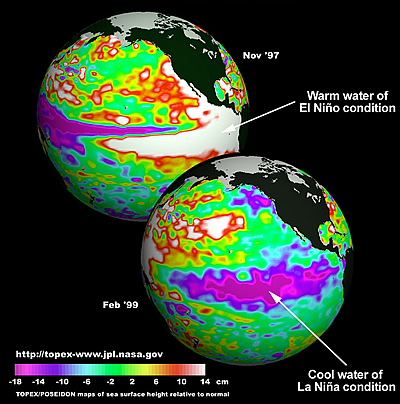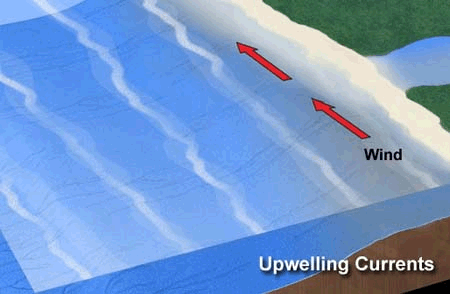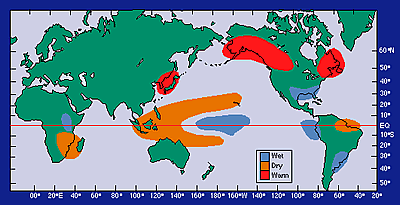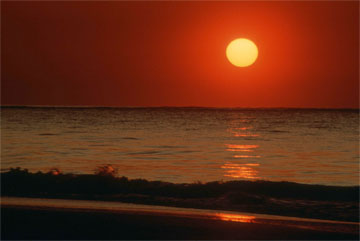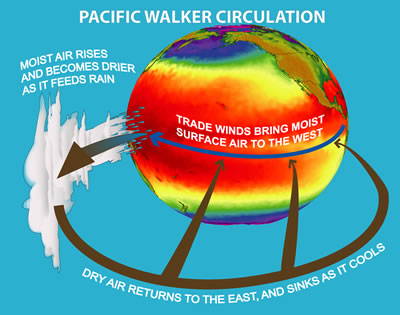Click on image for full size
Courtesy of NASA/JPL
The El Niño-Southern Oscillation (ENSO)
Floods and mudslides in Ecuador, droughts and wildfires in Australia, and extreme California rainstorms – could all of these events be triggered by the same thing? Yes they can. It’s the El Niño-Southern Oscillation (ENSO), a combination of changes in the ocean and atmosphere that affect weather in many areas of the world.
Normally, trade winds move water at the ocean surface from the eastern tropical Pacific towards the western Pacific. This creates upwelling of cold nutrient-rich water off the coast of Peru and Chile, which supports a diversity of marine life. The western Pacific is in a low pressure system and has wet weather. The eastern Pacific, in a high pressure system, is dry. But every 3 to 7 years the atmosphere and ocean change during El Niño and La Niña events – the two extremes of ENSO.
Air pressure rises in the western Pacific and falls in the central and eastern Pacific during El Niño, the warm phase of ENSO which happens in Northern Hemisphere winter. Without the strong pressure gradient, the trade winds weaken. Without the trade winds pushing the tropical Pacific Ocean water west, the warm and nutrient-poor water of the western Pacific spreads east, piling up water in the eastern tropical Pacific. This weakens the upwelling of nutrient-rich water in the eastern Pacific. Not as much marine life can survive in the warm water as can in the cool nutrient-rich waters.
During La Niña, the cold phase of ENSO, the trade winds grow stronger across the Pacific because the low pressure over the western Pacific strengthens, as does the high pressure over the central and eastern Pacific. This causes more upwelling of ocean water off the coast of Peru and Chile, making the surface water of the eastern tropical Pacific unusually cold.
Both El Niño and La Niña events can have far-reaching effects on the weather. Intense rainstorms and flooding, extreme droughts, the strength of the Atlantic hurricane season, and winter storms in many areas of the world are affected by ENSO events. ENSO may also have an impact on the North Atlantic Oscillation as it has an effect on the Arctic troposphere. These impacts are called teleconnections.


